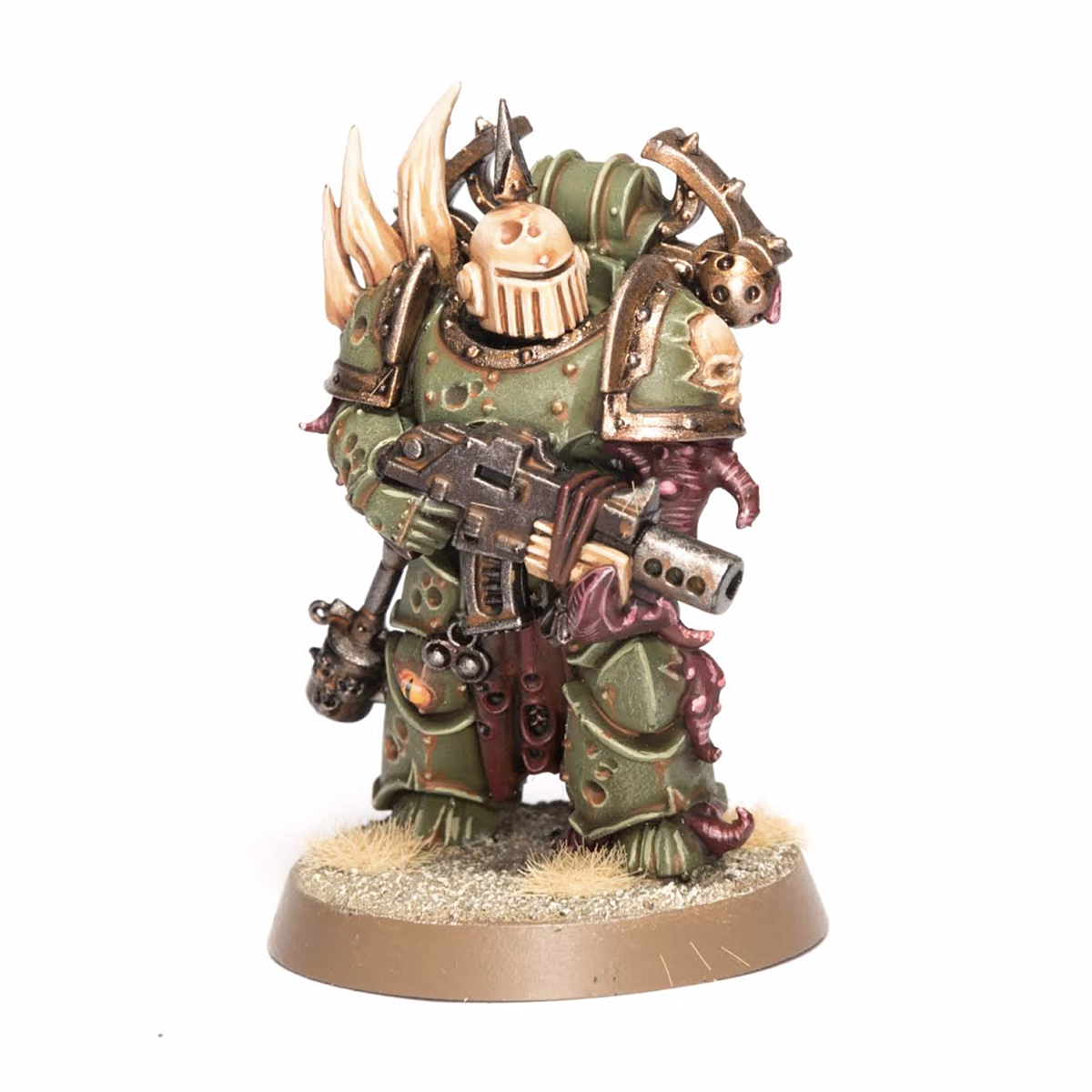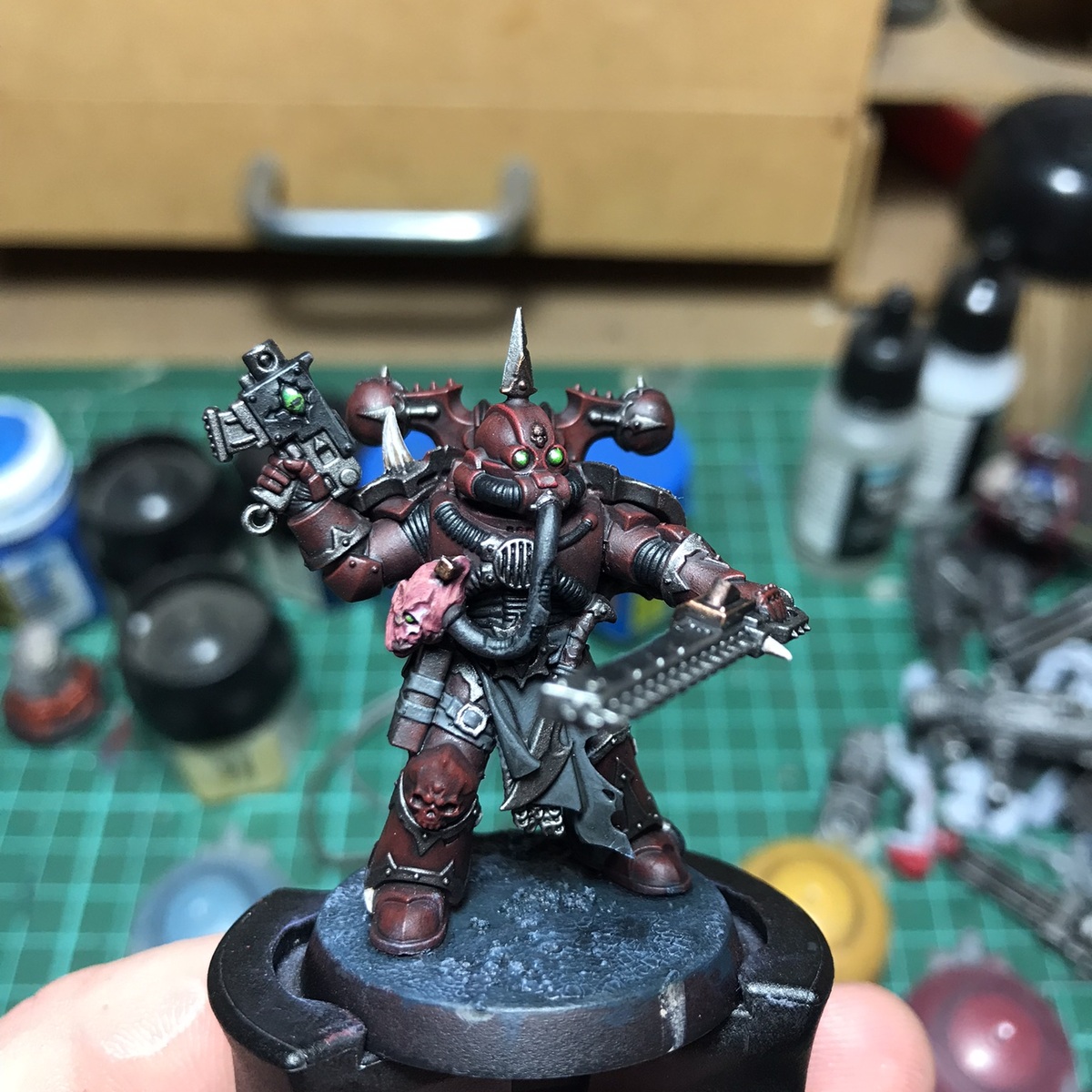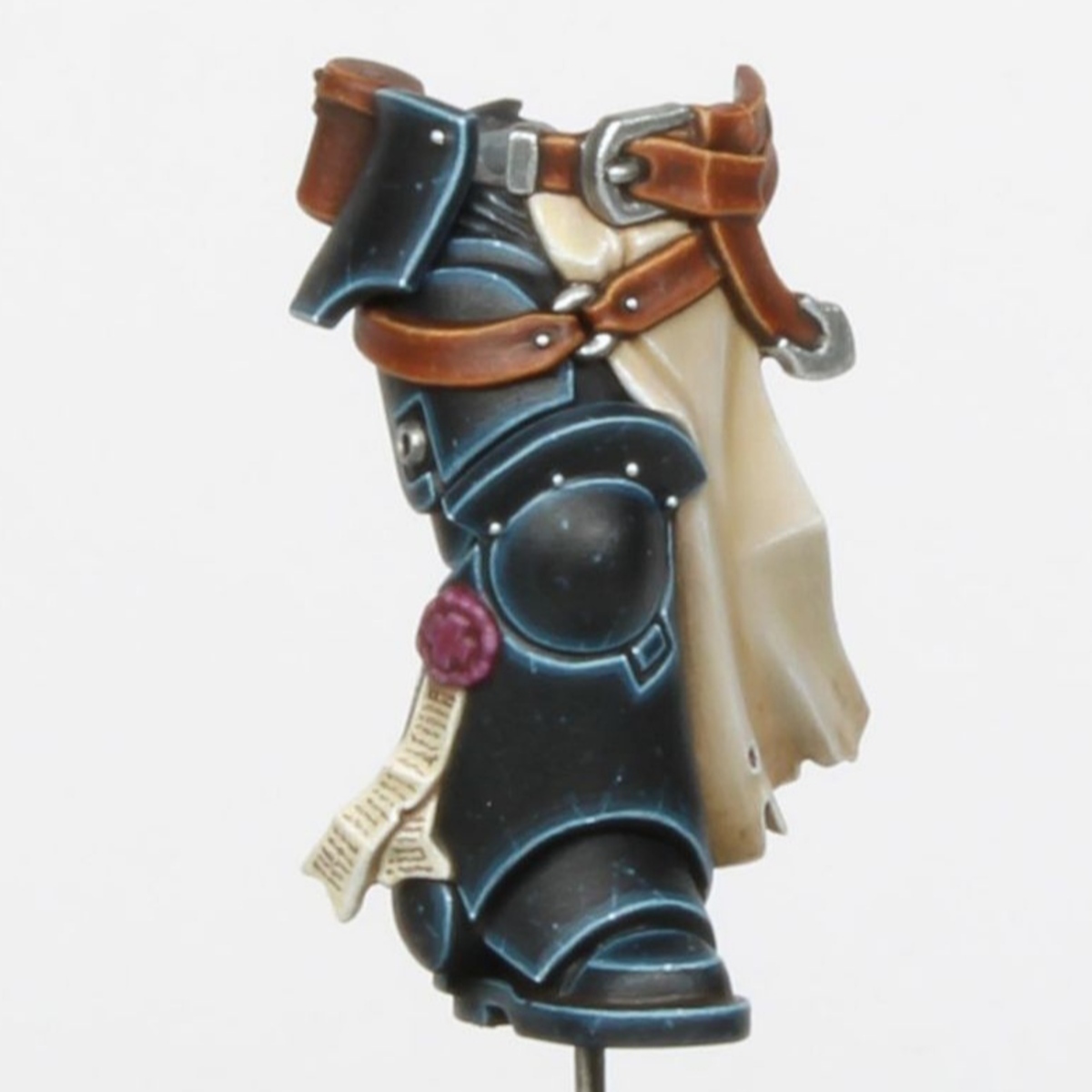Base Armor Color
- Base coat with black and zenithal white.
- Apply a thinned mix of Capricorn Brown and ProAcryl Dark Jade over all armor portions.
- Add a small amount of Undead Flesh to the basecoat and dry brush/stipple the mixture onto the armor. There's no need to be too tidy. Repeat a few times until you are at pure Undead Flesh .
- Begin adding Pro Acryl White Blue into the mix and repeat until you are at pure White Blue.
- Finally, add some Bold Titanium White to the mixture, focusing on the helmet and uppear reaches of the armor.
Scratches
- Add a small amount of water to Blue Black and sparingly stipple it onto the armor lightly with a sponge to provide an effect of scratches and chips in the armor.
Grime
- Apply Streaking Grime over all of the armor. This is going to look terrible at first.
- Using a q-tip or spare brush, use White Spirits to clean most of the Streaking Grime from the armor, leaving it in the recesses and a thin patina over most of the armor. You can do multiple passes on shoulder pads, helmet tops, etc to clean them further if desired.
- Once dry, use some Pro Acryl White Blue to edge highlight any edges or the most upwards-facing parts of the armor to bring back a bit of sharpness and definition to the armor. You can also use a thinned White Blue to apply some microscratches and texture to the surface of the armor.
Panel Lining
- Using Nuln Oil , add some definition to the crevices in the helmets and along armor panels to better define them. The grime settled here some, but a harder line will better define the armor.
Visor and Markings
- Using thinned Decay Black , fill in the visor and mouth lines of the helmet to complete black.
- Using a 1:1 mix of Huldra Blue and Decay Black , fill in the line that goes around the helmet above the visor.
- Use a contrast paint to paint the appropriate markings on the armor (e.g., Talassar Blue for 501st). Use reference images online to find the appropriate markings on the helmet, shoulders, back, legs, etc. For larger areas, I like to thin the contrast about 1:1 with Lahmian Medium so it isn't so overwhelming and our chipping still shows through a bit.
- Use Blue Black and fill in any chips that are too discolored or feel like they need some oomph again.
- Use Pro Acryl White Blue to apply highlighting to the bottom of the scratches. You can also use it to scratch up the edges of the markings so they look a bit more worn.
Under Armor
- Mix Black Leather with Decay Black to make a very dark but slightly toned mix and thin it so it flows nice. Paint all the grooves between armor -- between legs and torso, between helm and torso, between arms and torso, behind the knees, the exposed gloves/fingers, and sometimes at elbows/wrists -- with the mix. If you don't like the tone, you could use something like Black Templar or just Decay Black to make straight black divides.
Command Shoulderpad, Coat, and Belts
- For the Shoulderpad, belt pouches, and holsters, paint all of it except the raised pads with a mix of Huldra Blue and Decay Black . You want it near-black but with a little color to it.
- For the raised pads on the command shoulder, paint them with a thinned Airnrhod Blue . Mix in some Eldandil Violet and darken the edges and lower portions of the pads.
- Mix in some Pro Acry Light Blue to the Airnrhod Blue and do some edge highlights on the command shoulder pads.
- For the remaining black areas, add a wash of Nuln Oil , Heavy Body Black , or even a thinned Inktense Black to provide definition in the pouches.
- Do some edge highlights on the black leather with Blue Black and a dot of White Blue. Stipple along the edges to provide some texture.
Weapons
- Basecoat with a mix of Blue Black + Decay Black to get a dark near-black grey. This should be thin and let some of the zenithal show through.
- Use a thinned Heavy Body Black or something similar in a controlled wash to provide definition on all the angles and depth on the blasters.
- Use straight Blue Black and a light dry brush from above on the weapons to catch the edges.
(Optional) Dusting
- Find a weathering pigment that matches the base you want to use. For example, Terracotta Earth for a desert base. Take a dry flat brush and dab some of the dry pigment along the feet of the trooper. Aggressively dust it off using downward motions, trying to create a gradient of dust from the upper calf (very little dust) to the feet (more dust). If you feel like the effect is too strong, wet a brush and wipe some of the pigment off with a downwards motion. You can use a stiff brush like a dry brush to lightly scour the surface to remove pigment as well, but be careful of damaging the underlying paint.
- For something like a swamp or water base, you could try using Huge Miniature's texture pastes -- something like the lighter dirt along the upper parts of the leg, and the darker mud at the feet to represent lighter, dried mud higher on the armor, while the darker fresh wet mud stays at the feet.






.jpg)
